Prices & performance
Show fund factsheets & data
Strategy overview
Issuer:Key facts
ASX announcements

The iNAV reflects the estimated NAV per unit in respect of the Fund’s assets that have live market prices during the trading day. The issuer of the Fund has engaged ICE Data Indices, LLC as iNAV calculation agent to independently calculate the iNAV.
* iNAV calculations as shown (the "data") are provided by ICE Data Indices, LLC or its third party suppliers and are updated during ASX trading hours. iNAV calculations are indicative and for reference purposes only. The Fund is not sponsored, endorsed, sold or marketed by ICE Data Indices, LLC, its affiliates ("ICE Data") and ICE Data or its respective third party suppliers MAKE NO EXPRESS OR IMPLIED WARRANTIES, AND HEREBY EXPRESSLY DISCLAIM ALL WARRANTIES OF MERCHANTABILITY OR FITNESS FOR A PARTICULAR PURPOSE WITH RESPECT TO THE iNAV, FUND OR ANY FUND DATA INCLUDED THEREIN. IN NO EVENT SHALL ICE DATA HAVE ANY LIABILITY FOR ANY SPECIAL, PUNITIVE, DIRECT, INDIRECT, OR CONSEQUENTIAL DAMAGES (INCLUDING LOST PROFITS), EVEN IF NOTIFIED OF THE POSSIBILITY OF SUCH DAMAGES. You acknowledge that the data is provided for information only and should not be relied upon for any purpose.
Strategy Overview
This Fund is an Irish domiciled UCITS fund marketed in the UK under the Overseas Fund Regime (OFR). The Fund is not subject to the UK sustainability disclosure and labelling regime.
Key Facts
Exit Price:
Price Date:
Issuer:
* This is an annualised interest rate from the past seven days. For actual performance for our Cash Funds, please view the performance page.
Issuer:
Strategy Overview
Key Facts
Past performance is not a reliable indicator of future performance. Unless otherwise stated, performance returns for periods greater than one year are annualised. Net performance returns are calculated assuming reinvestment of distributions and use exit prices which are net of management fees and performance fees (where applicable). No allowance has been made for an investor's own brokerage when they buy their units on a securities exchange.
Infrastructure to shape our future
We invest in the companies our societies are built on. These are companies solving for the world’s long-term challenges such as urban congestion, digital mobility, and the energy transition. We are unapologetically active investors. We invest for future generations in mind, because a more sustainable world means better outcomes for our investors.
Why invest in the First Sentier Global Listed Infrastructure strategy?
Listed infrastructure provides essential services to society, making it less sensitive to the economic cycle.
Growth is being driven by long-term structural themes such as the build-out of renewable energy, the need to ease urban congestion, and increasing reliance on mobile data.
Focus on environmental stewardship and social license to operate supports long-term, sustainable returns to shareholders.
Effecting change through ongoing engagement and dialogue with companies.
Global Listed Infrastructure strategies
Global Listed Infrastructure strategy
Listed infrastructure provides essential services to society, making it less sensitive to the economic cycle.
Growth is being driven by long-term structural themes such as the build-out of renewable energy, the need to ease urban congestion, and increasing reliance on mobile data.
Focus on environmental stewardship and social license to operate ensures long-term, sustainable returns to shareholders.
Effecting change through ongoing engagement and dialogue with companies.
Meet the investment team
Peter Meany
Andrew Greenup
Edmund Leung
Rebecca Sherlock
Read our latest insights
Get the right experience for you
Your location :  New Zealand
New Zealand
Australia & NZ
-
 Australia
Australia -
 New Zealand
New Zealand
Asia
-
 Hong Kong (English)
Hong Kong (English) -
 Hong Kong (Chinese)
Hong Kong (Chinese) -
 Singapore
Singapore -
 Japan
Japan

















 United Kingdom
United Kingdom 